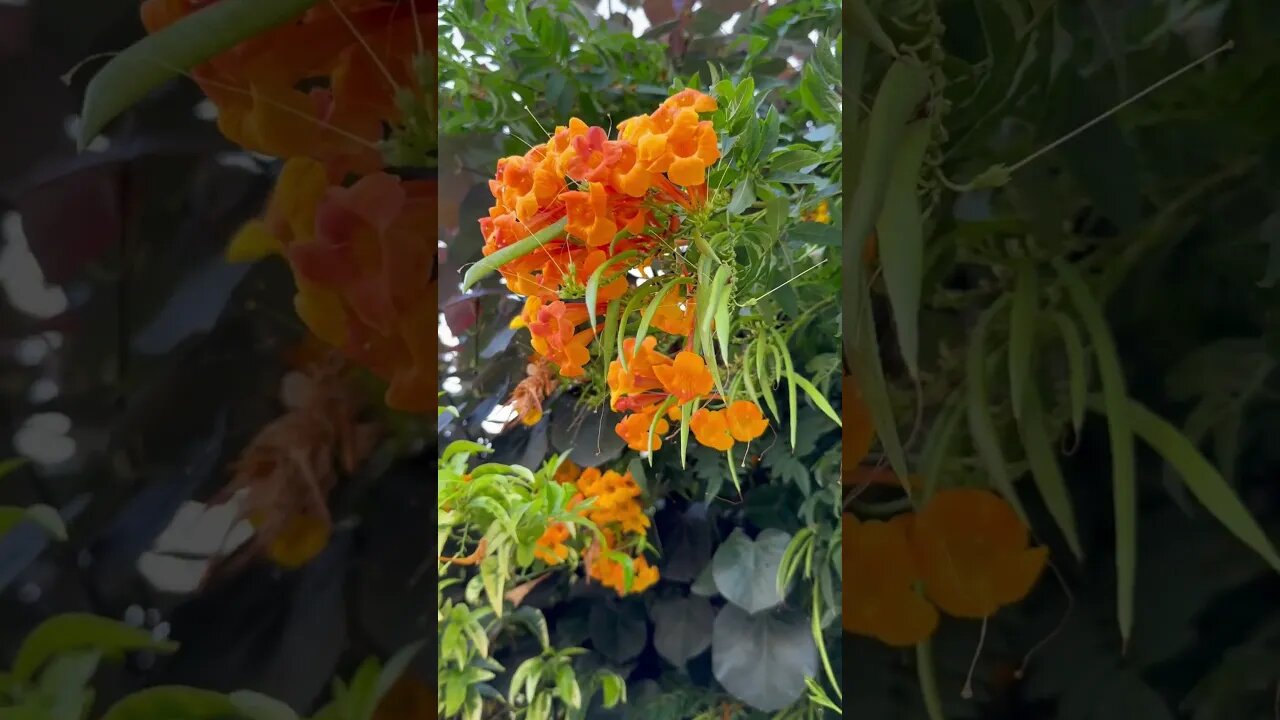Premium Only Content

What is a Trumpet Creeper?
#trumpetcreeper #Campsisradicans #classicalgas #masonwilliams
The Trumpet Creeper (Campsis radicans) is a fast-growing, deciduous vine known for its vibrant and trumpet-shaped flowers. Here's everything you need to know about the Trumpet Creeper:
Appearance: Trumpet Creeper is a vigorous woody vine that can reach heights of 30 to 40 feet (9 to 12 meters) or more. It has clinging aerial roots that help it attach to surfaces such as walls, fences, and trees. The leaves are pinnately compound, consisting of multiple leaflets that are glossy green and have serrated edges. The vine produces clusters of showy, tubular flowers.
Flowers: The flowers of the Trumpet Creeper are its most distinctive feature. They are trumpet-shaped, hence the common name, and come in vibrant shades of red, orange, or sometimes yellow. The flowers typically have five lobes and are arranged in terminal clusters. They are known to attract hummingbirds, butterflies, and bees due to their nectar-rich blooms.
Distribution and Habitat: Trumpet Creeper is native to eastern and southeastern parts of the United States, including regions such as the Gulf Coast, Midwest, and Northeast. It thrives in a variety of habitats, including forests, woodlands, thickets, and disturbed areas. It is adaptable to different soil types but prefers well-drained soils.
Growth and Invasiveness: Trumpet Creeper is known for its rapid growth rate, which can make it an aggressive vine in some settings. It spreads through both seeds and underground rhizomes, allowing it to colonize new areas quickly. It's important to carefully manage its growth, especially in gardens or landscapes where it can become invasive and overpower other plants.
Cultivation: If you wish to grow Trumpet Creeper, consider the following:
Sunlight: Trumpet Creeper thrives in full sun but can tolerate partial shade.
Soil: It prefers well-drained soils but can tolerate a range of soil types. It can grow in acidic, neutral, or slightly alkaline soils.
Watering: Established plants are moderately drought-tolerant but appreciate regular watering, especially during dry periods.
Pruning: Prune the vine in late winter or early spring to control its size and shape. It's important to note that the vine can produce suckers, so regular pruning may be necessary to prevent excessive spread.
Ecological Importance: Trumpet Creeper provides nectar and pollen for pollinators, particularly hummingbirds and butterflies. Its dense foliage and aerial roots can offer shelter and nesting sites for birds and small animals.
Caution: Trumpet Creeper can be aggressive and may require regular maintenance to control its spread. It can also damage structures, such as walls, if not properly managed. Additionally, the plant contains a milky sap that can cause skin irritation in some individuals, so caution should be exercised when handling it.
-
 1:47:18
1:47:18
Steven Crowder
5 hours agoTo Execute or Not to Execute: Trump Flips the Dems Sedition Playbook Back at Them
291K289 -
 16:11
16:11
RealMetatron
20 hours agoHasan Piker got HUMBLED in New York
17.7K6 -
 LIVE
LIVE
Viss
4 hours ago🔴LIVE - Helping Those That Need It Today - Arc Raiders!
184 watching -
 43:37
43:37
The Rubin Report
4 hours agoTriggernometry Hosts Try to Hide Their Shock at Sam Harris’ Charlie Kirk Claim
36.5K28 -
 2:35:30
2:35:30
SOLTEKGG
2 hours ago🟢 Live: Pro Player Returns to Battlefield 6 RED SEC
5.73K1 -
 LIVE
LIVE
StevieTLIVE
4 hours agoFriday Warzone HYPE: Come Chill, Chat, and Watch Me Fry
26 watching -
 1:00:57
1:00:57
Dr. Eric Berg
3 days agoThe Dr. Berg Show LIVE - November 21, 2025
22.3K9 -
 2:23:44
2:23:44
Film Threat
19 hours agoWICKED FOR GOOD + SISU 2 + LOADS OF REVIEWS! | Film Threat Livecast
12.4K -
 1:39:56
1:39:56
The Mel K Show
3 hours agoMORNINGS WITH MEL K - Globalists Continue to Pursue Agenda 2030-While Americans are Being Easily Distracted 11-21-25
21.8K5 -
 1:02:43
1:02:43
VINCE
6 hours agoDid The Democrats Really Just Commit Treason? | Episode 174 - 11/21/25 VINCE
225K226